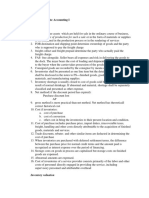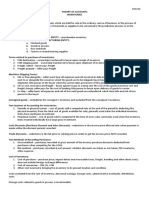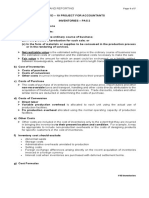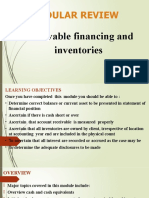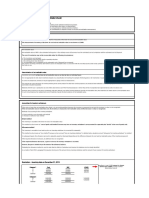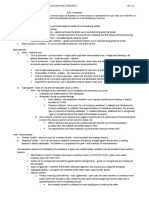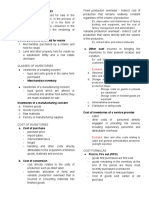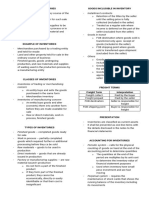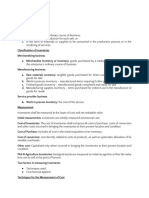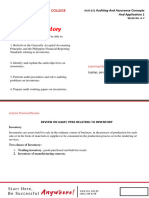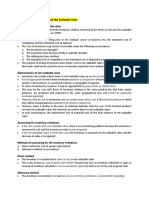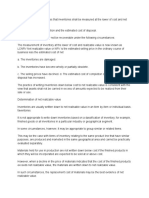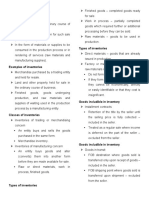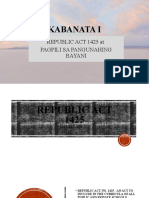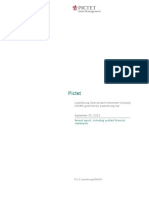0% found this document useful (0 votes)
144 views3 pagesINVENTORIES Refer To Assets That Are Held For Sale
1. Variable production overhead refers to indirect costs of production that vary with production volume, such as indirect labor and materials. It is allocated based on actual facility usage.
2. For a service provider, inventory cost consists of labor and other costs of personnel directly engaged in service provision, including supervisory staff and attributable overhead.
3. At delivery for a purchase commitment, Purchases are debited at the lower of committed or current price, Accounts Payable credited at committed price, with losses/gains on commitment recognized depending on current vs year-end prices.
Uploaded by
Nica MontevirgenCopyright
© © All Rights Reserved
We take content rights seriously. If you suspect this is your content, claim it here.
Available Formats
Download as DOCX, PDF, TXT or read online on Scribd
0% found this document useful (0 votes)
144 views3 pagesINVENTORIES Refer To Assets That Are Held For Sale
1. Variable production overhead refers to indirect costs of production that vary with production volume, such as indirect labor and materials. It is allocated based on actual facility usage.
2. For a service provider, inventory cost consists of labor and other costs of personnel directly engaged in service provision, including supervisory staff and attributable overhead.
3. At delivery for a purchase commitment, Purchases are debited at the lower of committed or current price, Accounts Payable credited at committed price, with losses/gains on commitment recognized depending on current vs year-end prices.
Uploaded by
Nica MontevirgenCopyright
© © All Rights Reserved
We take content rights seriously. If you suspect this is your content, claim it here.
Available Formats
Download as DOCX, PDF, TXT or read online on Scribd
/ 3


